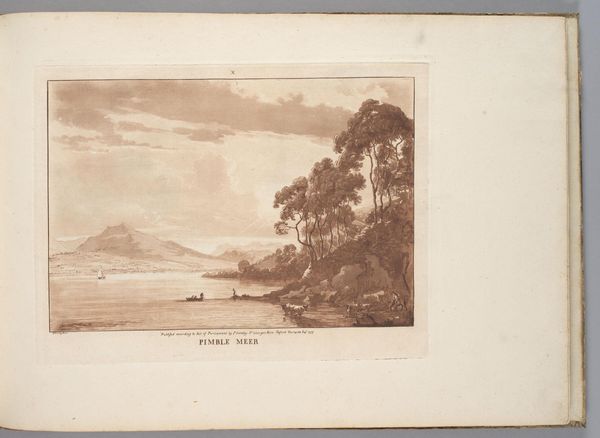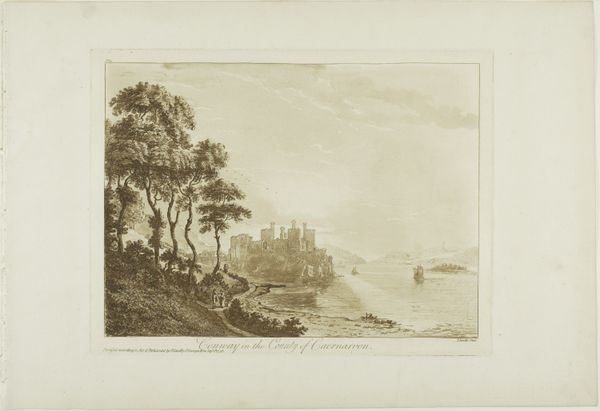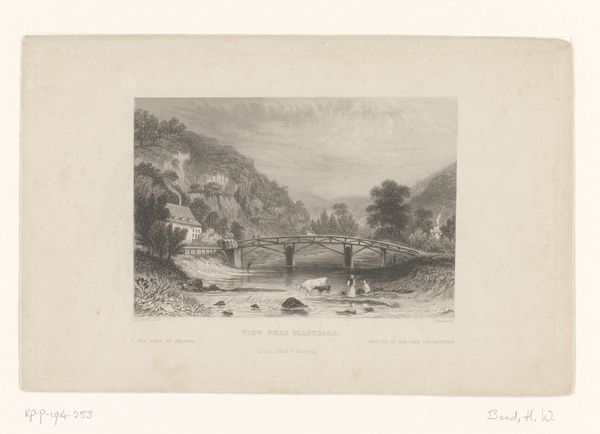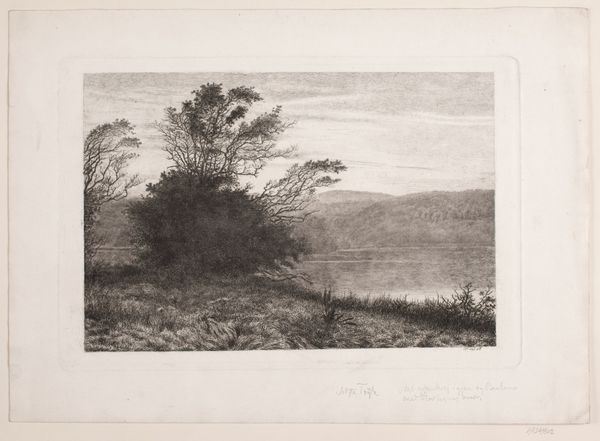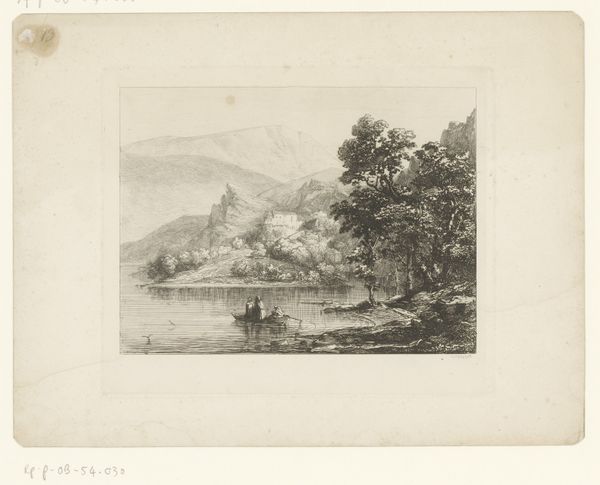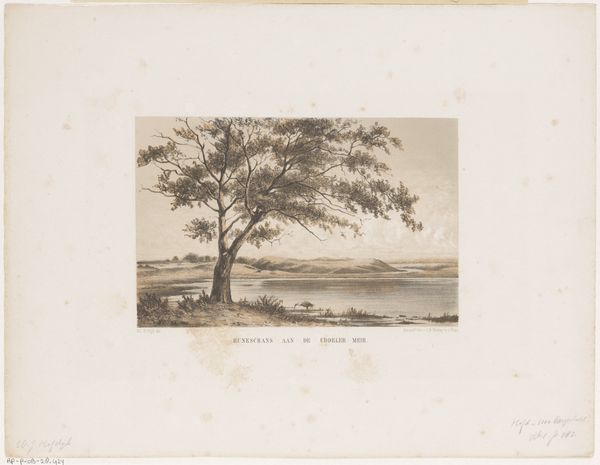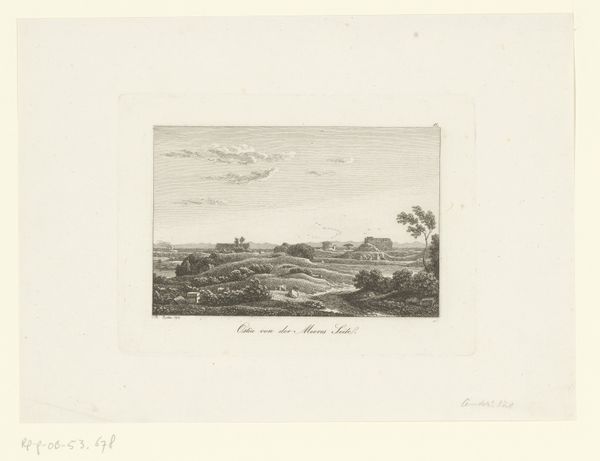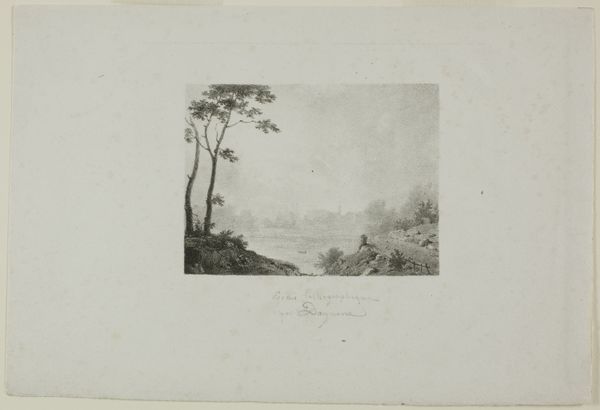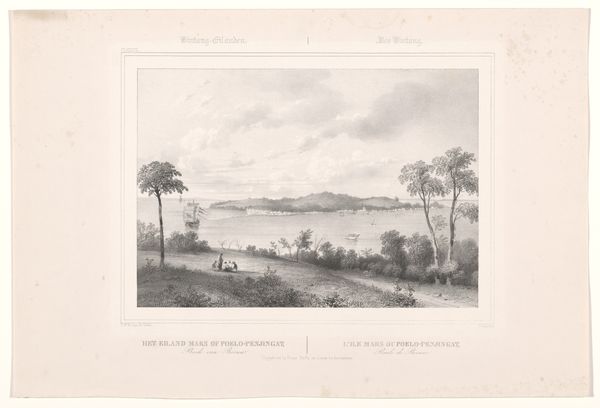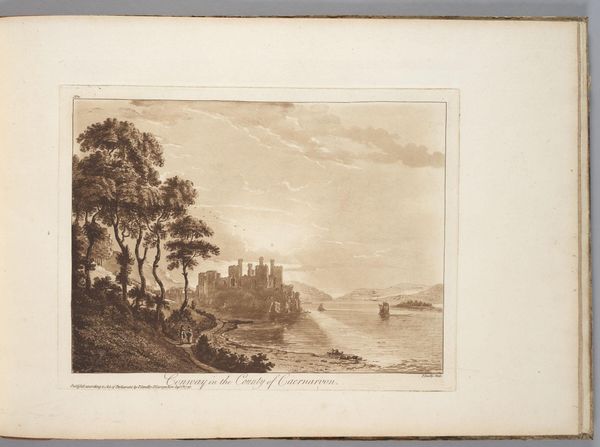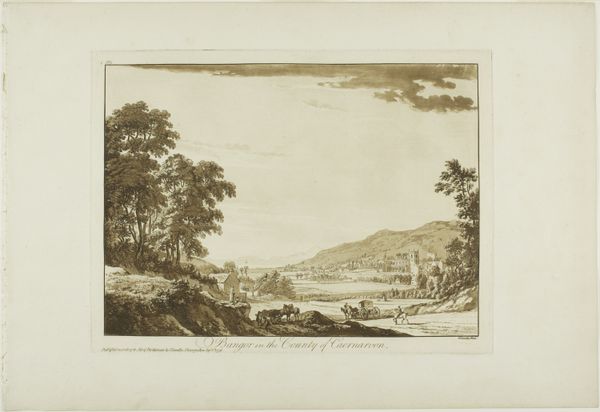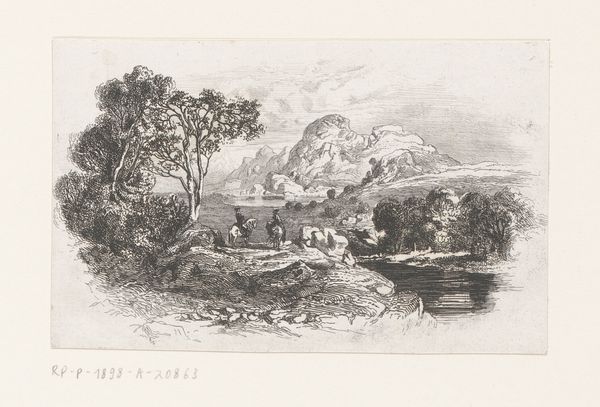
Dimensions: 237 × 314 mm (plate); 320 × 463 mm (sheet)
Copyright: Public Domain
Paul Sandby made this print of “Pimble Meer” using etching and aquatint. It’s a view of what is now called Lake Bassenthwaite in England’s Lake District. Prints like this one contributed to the late 18th-century vogue for picturesque tourism. Sandby helped to create the fashion for appreciating wild, sublime landscapes. These were newly accessible to middle-class travelers thanks to improved road systems. But the picturesque wasn’t simply about a neutral appreciation of natural beauty. It was a cultural project, teaching people how to see landscape through the lens of artistic convention. Sandby was also a founding member of the Royal Academy. The Academy played a key role in shaping British art, by establishing standards of taste and providing exhibition venues. So, Sandby’s print exists at the intersection of several important cultural and institutional developments. We can better understand it by exploring the history of tourism, the rise of landscape art, and the role of the Royal Academy in British cultural life.
Comments
No comments
Be the first to comment and join the conversation on the ultimate creative platform.
